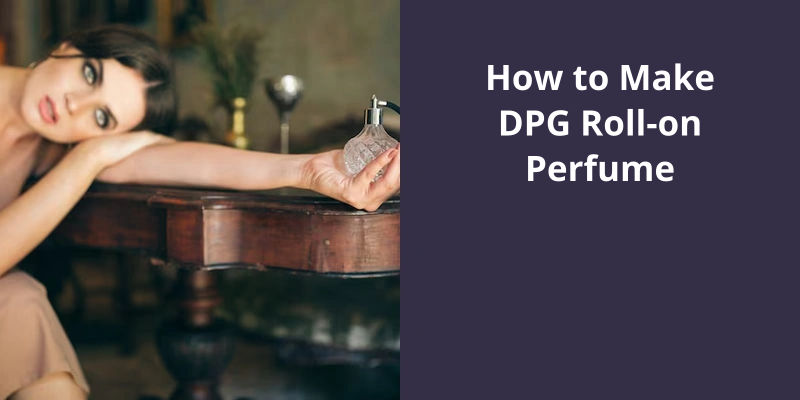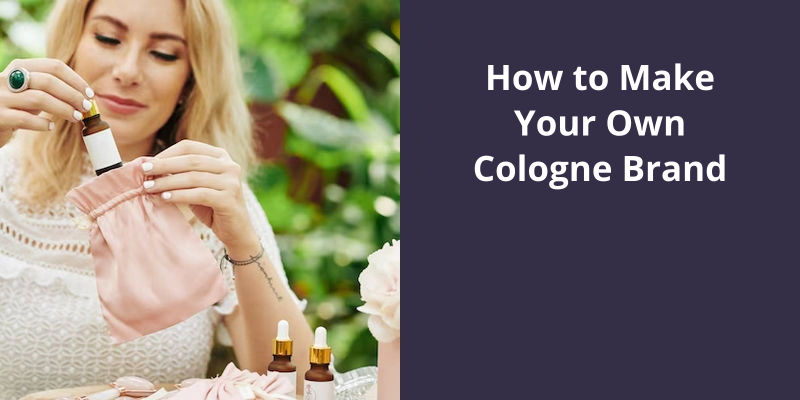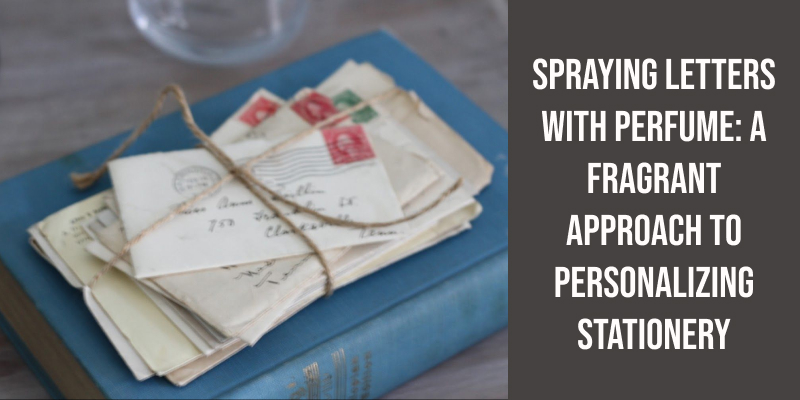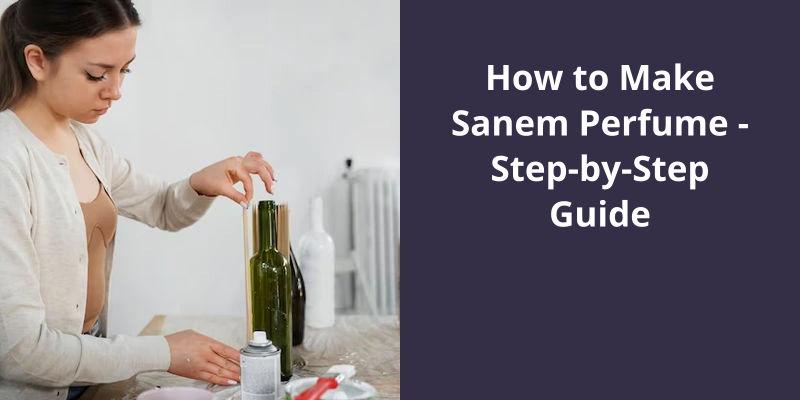Making DPG Roll-on Perfume involves a simple process. Start off by obtaining the essential ingredients: Dipropylene Glycol (DPG), essential oil, and a roll-on bottle. DPG acts as a clear and odorless diluent which enhances the longevity of your perfume. First, measure out the DPG. You should use approximately 85-90% DPG and 10-15% essential oil, but this can be adjusted based on personal preference for fragrance strength. Combine these in the roll-on bottle and shake well to mix. Let the mixture sit for a couple of days to allow the aroma to develop. Then, your homemade DPG Roll-on Perfume is ready to use. Remember to shake before each use, and store it in a cool, dark place for longevity.

What Is the Benefit of DPG in Perfume?
It’s known for it’s ability to increase the solubility of fragrance compounds, making them more soluble and stable in water-based solutions. This is an important aspect of perfume formulation because most fragrances are oil-based, and if left as is, they’ll not mix well with water-based solutions. As such, without an emulsifying agent, the fragrance compounds would separate from the water leading to an unstable composition.
Another benefit of using DPG in perfumes is that it’s a very mild odor, which means it doesn’t interfere with the overall fragrance profile that’s being created. This is important, as the purpose of adding an emulsifying agent is to maintain the composition of the fragrance and not to alter the intended smell in any way. DPG is also non-toxic and safe, which means it’s a natural choice for use in cosmetics and personal care products.
This stability means that perfumes that contain DPG have a longer shelf life spans and will maintain their fragrance profile well over time.
This means that it can be used in a variety of fragrance formulations, from light and fresh scents to more complex and heavy ones.
As such, it’s no surprise that DPG is one of the most important ingredients in the perfume industry today.
How Is DPG Different From Other Emulsifying Agents Used in Perfume?
DPG or Dipropylene Glycol is a type of emulsifying agent used in perfumes. It’s different from other emulsifiers as it’s low odor and is less likely to cause skin irritation.
Understanding the right ratio of DPG to fragrance is crucial for creating high-quality incense. DPG plays a critical role in holding the scent together and creating a long-lasting effect. In this article, we will delve deeper into the importance of this ratio and how it impacts the overall quality of incense.
What Is the Ratio of DPG to Fragrance?
DPG, or Dipropylene Glycol, is a common ingredient in various products due to it’s versatility and safe usage. With vast applications in the cosmetic, pharmaceutical, food, and fragrance industries, DPG has become an essential compound in the production of different consumer goods. This clear, odorless liquid is also widely used in incense making because it can bind to fragrance oils and essential oils, helping them to burn slowly and emit a long-lasting aroma.
When it comes to making incense, the ratio of DPG to fragrance is a crucial factor that affects the overall quality of the product. This ratio ensures that the fragrance adequately binds to the stick or cone, creating a slow-burning incense with a consistent scent throughout it’s use.
Moreover, the ratio of DPG to fragrance can be adjusted depending on the concentration and potency of the fragrance oil being used.
In the fragrance industry, DPG is typically used as a diluting agent to extend the life of the fragrance and adjust it’s concentration.
The use of DPG as a binding agent creates a slow-burning incense and helps to maintain the consistent strength of the aroma.
The Potential Health Effects of Inhaling DPG and Fragrance in Incense
- Respiratory irritation
- Allergic reactions
- Asthma symptoms
- Headache and dizziness
- Nausea and vomiting
- Eye and skin irritation
When it comes to fragrance application, roll-on options have their own unique benefits. But what about using fragrance oils in these types of applicators? Let’s explore the advantages and considerations of using fragrance oils in roller-ons, and how it may affect your scent experience.
Can I Use Fragrance Oil in Roller On?
Roll-on applications are becoming increasingly popular as they offer a more subtle and personalized approach to fragrance application. Fragrance oils are a great alternative to traditional spray-on perfumes, as they offer a more natural and long-lasting scent. When used in roller balls, fragrance oils can be applied directly to the skin, allowing for a more precise and targeted application.
Roll-on applications also offer the convenience of being easily transportable. They can be carried in purses or pockets, making them perfect for on-the-go touch-ups throughout the day. The compact size also allows for easy blending and layering of different scents, providing endless possibilities for scent combinations.
Benefits of Using Fragrance Oils Instead of Traditional Perfumes
Fragrance oils are a great alternative to traditional perfumes for several reasons. Firstly, they’re made from natural ingredients, which means they’re safer for your skin. Secondly, they last longer than traditional perfumes, which means you’ll save money in the long run. Finally, fragrance oils can be used in a variety of ways, such as in diffusers or as room sprays, making them a versatile addition to your fragrance collection.
Source: How Do You Apply Roll-On Fragrance Oils?
Creating your own roll on perfume can be a fun and easy DIY project that allows you to personalize your scent. By following a simple recipe and using the right ratios, you can make a custom fragrance that’s perfect for you. Here’s how to do it.
How Do You Make Homemade Roll on Perfume?
Making homemade roll-on perfume is a fun and easy way to create your own unique scent. You can customize the aroma to your liking and even experiment with different blends of essential oils. You’ll need a roller bottle, carrier oil, and a blend of perfume oils. The carrier oil will dilute the perfume oils so they aren’t too strong and also provide moisture to your skin. The ratio of carrier oil to perfume oil blend should always be 90:10.
Once you’ve your ingredients, you can start mixing. To create your perfume oil blend, select your favorite essential oils and mix them in a separate container. You can split the number of drops evenly or by using your preferred ratios. Some popular ratios include 5-7 drops of base notes, 4-5 drops of middle notes, and 3-4 drops of top notes. Base notes are typically scents like vanilla and sandalwood, middle notes are floral and fruity scents like lavender and jasmine, and top notes are fresh and citrusy scents like bergamot and lemon.
Finally, give your homemade perfume a good shake to combine the ingredients. Roll the perfume onto your pulse points, such as your neck, wrists, and behind your ears. This will allow the scent to last longer and be more impactful.
It consists of mixing carrier oil and a blend of perfume oils in a specific ratio, filling the roller bottle, and shaking to combine the ingredients.
Tips for Selecting and Sourcing High-Quality Essential Oils for Homemade Perfumes.
- Research the brand and their sourcing methods for the essential oils.
- Choose essential oils that are 100% pure and not synthetic.
- Look for oils that are steam distilled or cold-pressed for the highest quality.
- Consider the country of origin for the essential oil and whether it’s known for producing high-quality oils.
- Check for certifications such as USDA organic or EcoCert.
- Avoid oils that are labeled as fragrance oils or perfume oils as these contain synthetic fragrances rather than natural essential oils.
- Test the scent and quality of the essential oil by smelling it and looking for clarity and consistency.
- Store essential oils in a cool, dark place away from direct sunlight and heat to maintain their potency and quality.
Conclusion
In conclusion, making a DPG roll on perfume requires a combination of precision, creativity, and passion. Crafting the perfect blend of scents, selecting the right carrier oil, and determining the appropriate dilution ratio are just a few of the many steps involved in this intricate process. It takes time, effort, and a deep understanding of both the ingredients and the recipient's preferences to create a unique and memorable perfume.





